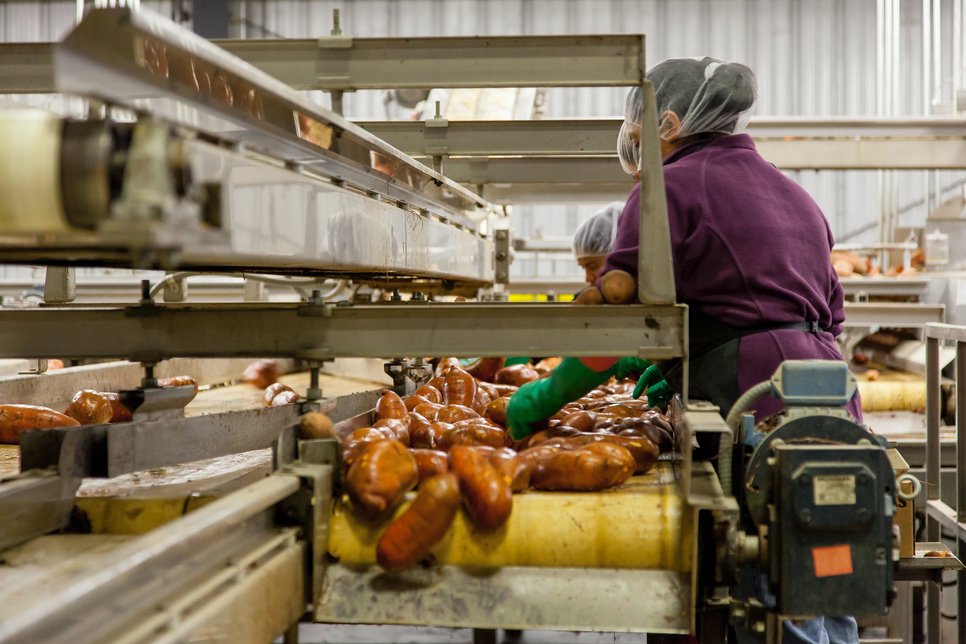Situational Vulnerability in Supranational and Italian Legislation and Case Law on Labour Exploitation
How to identify situations of abuse of vulnerability, which are constitutive of severe labour exploitation? In this blogpost, Maria Grazia Giammarinaro and Letizia Palumbo call for a situational approach to identify positions of vulnerability. Such an approach shouldn’t be focused on personal characteristics exclusively, but it should also consider the broader social context and gender-based inequalities that should be appraised from an intersectional perspective.

Over recent years, the notion of vulnerability has spread enormously in research work and in political and legal discourses. By questioning the conception of vulnerability as something static or fixed, scholars, in particular feminist legal and social scholars, have rightly underlined the context-specific dimension of this notion as always related to people’s positions in society and in power relations. This ‘situational’ conception of vulnerability considers, therefore, the interplay of personal factors and structural/contextual circumstances which render a person vulnerable to exploitation or abuse by others. Along this perspective, vulnerability is not opposed to nor does it exclude agency. Instead, it recognizes the ways persons act, negotiate and make their choices within contexts marked by structural injustices and inequalities.
Building on this conceptual framework, in our recent article we have examined whether and how the Italian and supranational legislation and case law regarding labour exploitation take into account this situational dimension of vulnerability. This blogpost summarises our main findings.
Vulnerability in the International and European Legislations on Trafficking and Forced Labour
The term ‘vulnerability’ appears in the definition of trafficking of persons at the very final stage of the negotiation of the 2000 UN Protocol on Trafficking (the ‘Palermo Protocol’), with the aim of finding a compromise – among national official delegations and among feminist associations – between an excessive criminalization on the one hand, and underestimation of subtle means of coercion used by exploiters and traffickers on the other. This compromise was reached by introducing the concept of ‘abuse of a position of vulnerability’. As the travaux préparatoires of the Protocol specified, a position of vulnerability “is understood to refer to any situation in which the person involved has no real and acceptable alternative but to submit to the abuse involved”.
This definition of the position of vulnerability, which was then incorporated in the EU Directive 2011/36 on trafficking, reflects the situational dimension of this notion. Indeed, rather than limiting vulnerability to the person’s inherent characteristics, it significantly stresses the importance of considering the circumstantial and structural social factors that leave a person without any concrete and real alternative but to ‘accept’ abusive and exploitative relations and conditions.
In the context of interpretation, therefore, the attention of legal actors and experts should be on assessing the existence of an alternative considered real and acceptable for the concerned person. What matters is that the alternative is a real alternative, that is, it presents the characteristics of a non-exploitative job, or at least of a job in which exploitation is not associated with coercive or abusive practices and therefore is not incompatible with the realization of the life plan of the person.
This ‘situational’ understanding of vulnerability requires a case-by-case assessment of the interplay of personal and contextual factors producing it. This helps to avoid the use of a ‘reasonableness test’ based on criteria of ‘social normality’, as cases of exploitation often concern extreme situations in which the persons find themselves facing an ‘impossible choice’ between incomparable needs: survival (of themselves and of their families) or dignified work; choices that no person should be faced with in a democratic society which should guarantee social human dignity.
The situational conception of vulnerability also emerges in the Explanatory Report of the 2005 Council of Europe Convention on Trafficking, which explicitly recognize that certain situations of vulnerability are created or exacerbated by relevant legislation and policies.
Lastly, the 1930 ILO Convention on Forced Labour does not expressly refer to the notion of vulnerability. However, the ILO supervisory bodies have clarified that psychological coercion (such as the threat to denounce an undocumented worker to the authorities) can be qualified as threat of penalty according to the ILO definition of forced labour. Such a subtle form of coercion indirectly refers to the notion of vulnerability.
Vulnerability in the ECtHR and Italian Case Law on Exploitation
Over the last few years there has been a steady increase in the use of the notion of vulnerability in ECtHR case law, including on decisions concerning cases of victims of trafficking and severe labour exploitation. In 2017, in the case Chowdury and others v. Greece, the ECtHR – for the first time – applied article 4 of the ECHR (‘Prohibition of slavery and forced labour’) to a case of labour exploitation of undocumented migrant farmworkers in the agricultural sector in Greece, considering the situational dimension of vulnerability of these workers. Indeed, the ECtHR paid specific attention in its reasoning to different factors – in particular the condition of “irregular migrants without resources and at risk of being arrested, detained and deported” – producing a position of vulnerability to exploitation.
In Chowdury, the ECtHR also addressed the issue of voluntariness and consent to exploitation, affirming that, where employers abuse their power or take advantage of the vulnerability of workers to exploit them, these latter “do not offer themselves for work voluntarily”. The prior consent of the person concerned to abusive conditions – the Court pointed out – is “not sufficient to exclude the characterization of work as forced labour”, as in a position of vulnerability the person has no concrete alternatives, and therefore no real choice. Such an approach to consent to exploitation has been confirmed by the ECtHR in the recent judgment Zoletic and others v. Azerbaijan.
In these cases, the ECtHR acted in line with the international and supranational legislation on trafficking, which states that the consent of a person to exploitation is irrelevant when one of the illicit means has been used. Such a provision does not mean that a person cannot consent to exploitation. But it means, instead, that the consent of victims cannot be used by traffickers/exploiters to defend themselves.
The issue of consent is, therefore, the other side of vulnerability to exploitation. Indeed, if viewed as a continuum, exploitation is characterized by varying degrees of submission and/or acceptance to certain exploitative situations. Along this continuum, forms of exploitation are associated with different ‘situational’ vulnerabilities.
From this perspective, legal experts and actors should look at the material conditions in which the concerned person gave his/her consent to certain exploitative practices, examining the dynamics and contextual elements generating a situation of vulnerability in which labour exploitation becomes the only feasible choice in the face of a worse alternative.
This is the approach followed by the ECtHR in the above-mentioned judgments. A similar approach emerges in relevant Italian case law on international protection, and in particular in two recent decisions of the Tribunal of Milan (decision of 12.5.2021, RG. 42440/2019; decision of 12.5.2021, RG. 57114/2018) that have granted humanitarian protection to two asylum seeker victims of labour exploitation in the agri-food sector in Italy. In both cases, the judges highlighted the position of vulnerability caused by the violence and abuses experienced in the countries of origin and during the migratory path. Furthermore, the judges identified as a crucial element of vulnerability the lack of alternatives for these persons to accepting exploitative conditions in Italy. As the judges argued, the condition of vulnerability of the concerned person “has its roots in the total absence of concrete alternative solutions, given the impossibility of finding a regular job combined with the fear of losing the one found which – although irregular and without the minimum guarantees of protection – allows [him] to survive in an extremely inhuman and degrading context”.
Exploitation of Migrant Women and the Importance of a Gender and Intersectional Based Perspective

Woman cleaning Sweet Potatoes
In our analysis of relevant rulings of the ECtHR and Italian Courts, we highlighted that, with the exception of landmark rulings of the ECtHR on exploitation of sexual labour and domestic servitude, and a few national judicial decisions, there is a lack of a robust case law on labour exploitation experienced by women, especially migrant women, for instance in sectors such as agriculture. This absence reveals the difficulties in detecting and addressing these cases, and recognizing related positions of vulnerability.
Recent studies have shed light on forms of exploitation experienced by women, especially migrant women, in different labour sectors (including, for instance, domestic work and agriculture), highlighting the interplay of different factors rendering them vulnerable to dynamics of exploitation. These factors include, amongst other things, care and family responsibilities, constituting one of the key elements inducing women to accept exploitative working conditions.
In this scenario, the paradox of a gender approach to the position of vulnerability of women is that a gender perspective is most often ignored by institutional actors. Yet, when used, it still tends to perpetuate and strengthen the traditional and patriarchal stereotype of an intrinsic ‘weakness’ linked to female subjects, legitimizing paternalistic interventions that may increase the vulnerability of the persons they aim to protect.
In contrast to this, a gender approach to vulnerability should look at the intersectional factors creating situational vulnerabilities, considering the differences in the experiences of women, men and transgender people. With regard to women, this means taking into account their subordinate position in the patriarchal hierarchy that is in turn linked, in various forms, to capitalism, in particular to neoliberal policies, and to other discrimination grounds including age, race, class, nationality, dis/ability etc.
Such a gender-based and intersectional perspective on the situational vulnerabilities of women means recognizing and qualifying the forms of exploitation that they have experienced and, at the same time, promoting their rights, including labour and social rights. This is required to foster paths of empowerment and social inclusion that respond to women’s different needs and life and work projects.

